Tropical fruit - Frutta tropicale [ENG/ITA] (2 of 2)
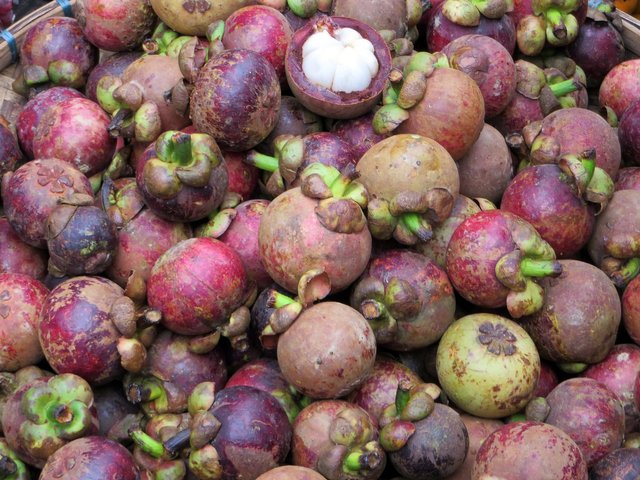
Image CC0 Source Pixabay
ENGLISH
Here we are at the second part of our journey to discover tropical fruit, especially the species you can find in Panama, in Central America. In the first part we observed closely the most popular and exported exotic fruits: today we will analyse some other that you can hardly find outside those countries located in the tropical zone.
I should briefly mention, however, two pillars of the local food economy and foreign trade, which I will not consider here because they need an exclusive focus: coffee, which is often forgotten when we talk about tropical species and cocoa.
The first, which in Panama is grown in a very high quality not used for commercial blends that we all buy at the supermarket but just to create an elite product, is a complex and nuanced world as much as wine. The second one deserves a separate chapter to discover the process that turns it into chocolate! I hope, in the future, to be able to tell them both.
Cashew
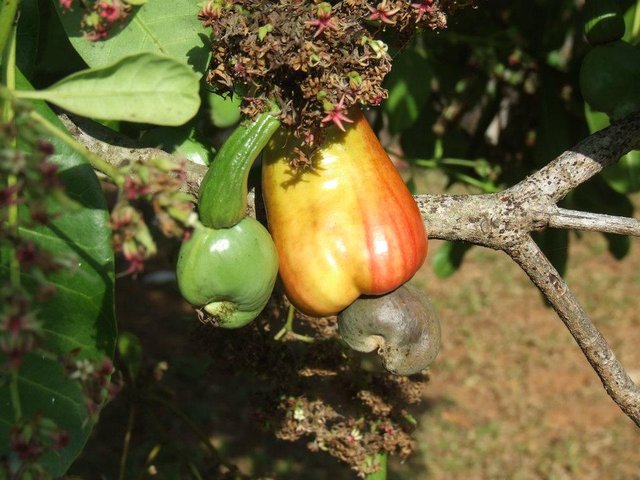
The local fruit with which we have had a "close relationship" since our arrival in our new country is marañón (cashew), which in fact gave the name to our guest house as it was the only thing present in our property at the time of purchase: it belong to the family of the Anacardiaceae, which also includes mango and pistachio, so called because these fruits recall the shape of a heart, cardium in Latin.
Many people know this nut come originally from Brazil, but almost nobody knows how it develops. It grows on an evergreen small tree with an often curved trunk that generates small fragrant pink flowers: only one or two fruits will grow for each inflorescence. The first sprout that emerges is the heart-shaped nut (although it is more reminiscent of a kidney), but then a second body begins to develop, the pseudo fruit, called apple cashew: its dimensions and features recall our pear, but not the consistency that results, on the contrary, soft. Its peel is yellow or red and is very smooth. The apple cashew is easily perishable and, not having a great taste, it is not even marketed locally.
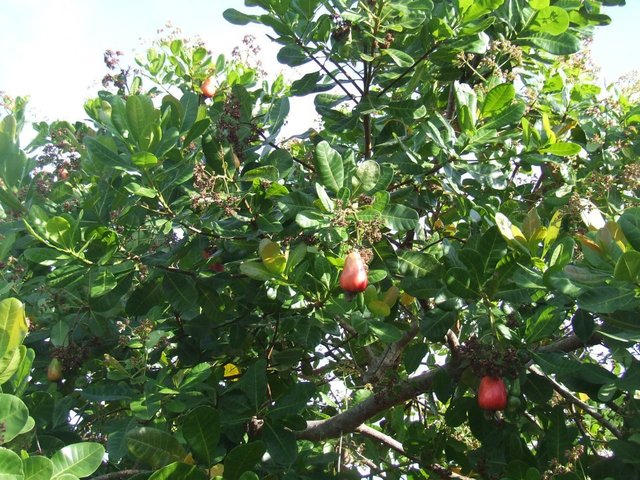
There are plenty of cashew trees along Panama country roads and the locals, during the harvest season which runs from January to March in general, take the opportunity to collect their fruits: the "apples" will be used at home for some typical dessert or juice, like chicha de marañón (squeezed and diluted with water and sugar to temper the strong astringent taste) while nuts will be sold raw or processed.
To make the cashews edible, they need a laborious process, without which the contact of skin with the internal part of the seed would cause serious burns: breaking the shell, in fact, a corrosive acid highly harmful to human tissues comes out. It is used industrially to produce resins, paints and waterproofing agents. The long processing includes roasting, similar to that of our roasted chestnuts, drying, shelling and a further roasting. The result is a very tasty snack rich in nutrients, although with a high allergic rate.
Passion fruit
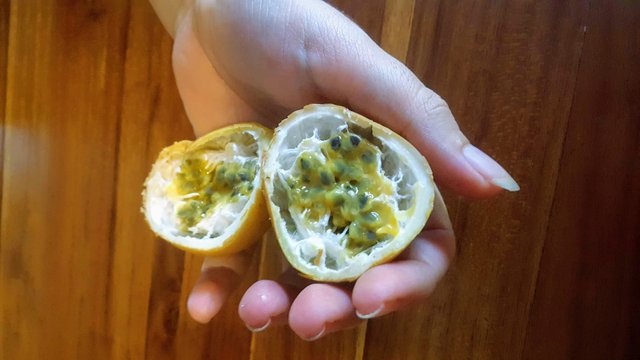
Maracuyá or passion fruit, despite having a delicious taste and various nutritional properties, like all the vegetable products after all, has no particular notes to consider if not the beauty of its flower, the famous Passiflora. The plant is a creeper with large flowers that produces yellow or purple oblong fruits generally sour, except in the sylvan version that has smaller and sweeter berries.
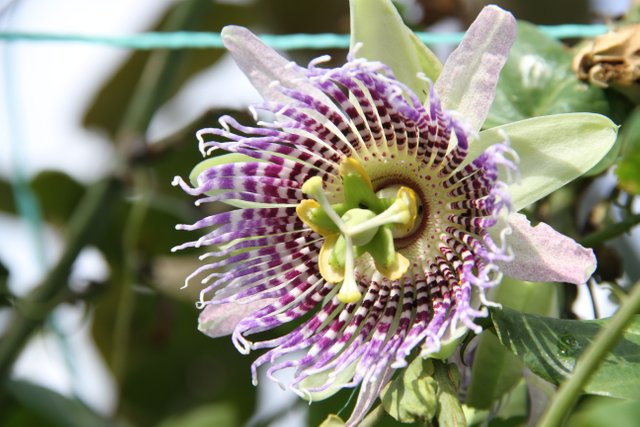
By Germanchauta - Own work Source Wikicommos CC BY-SA 4.0
Mangosteen
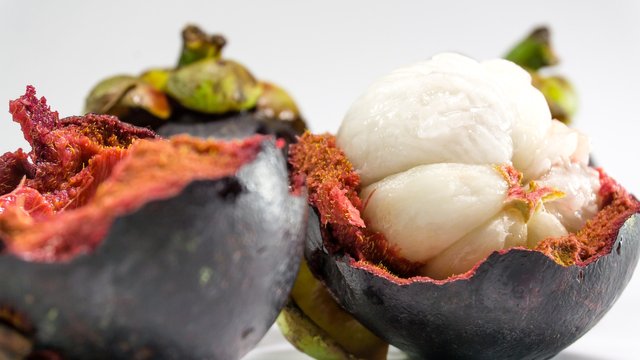
Image CC0 Source Pixabay
Mangosteen is a native fruit to Southeast Asia, arrived in Panama at the beginning of 1900 and is characterised by a hard purple skin that contains a white succulent pulp. Due to its flavor it is considered the king of tropical fruit although its distribution is small. Mangosteen had a boom in the 2000's due to its alleged anticancer properties that led it to be marketed as juice in various countries of the world. Subsequently, the FDA (Food and Drug Administration) in the US first and then other foreign institutions suspended the spread of the fruit as a medicinal product. Since then it has been reintroduced on the market as super food, for its undeniable nutritional values including vitamins B and C, folic acid and various mineral salts.
Other studies, however, including one of the 2009 published in the Journal of medicinal food report results for which mangosteen would help to stimulate the immune system and would have properties anti-inflammatory and anti-oxidant. It's worth tasting it anyway!
Peach-palm
_11.jpg)
Image of public domain Source Wikipedia
Pifà, which scientific name is Bactris gasipaes, probably holds the record in terms of names with which it is known in Spanish including pipire and pixbae, it’s known in English as peach-palm.
It belongs to the Arecaceae family, commonly known as palm trees: it is in fact a palm tree up to 20 meters tall with a thorn-covered trunk. Pifà is a round-shaped drupe no larger than 6 cm in diameter, green to orange/red and with a powdery consistency; it is generally consumed after cooking in salt water and has a very inviting flavor similar to potato, but tastier. Its nutritional values make it one of the most complete tropical fruits: in fact it has up to 4.8% of high quality proteins, essential amino acids, unsaturated fats, Beta-Carotene, calcium and iron among others.
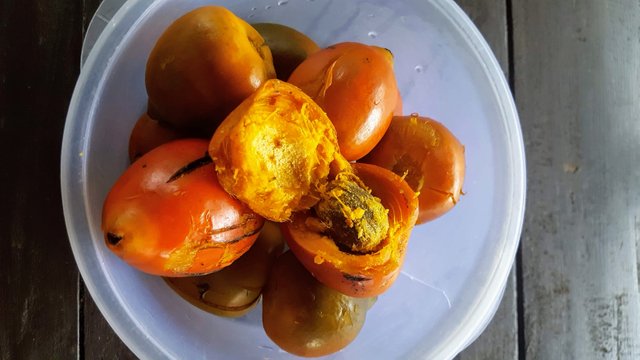
Soursop
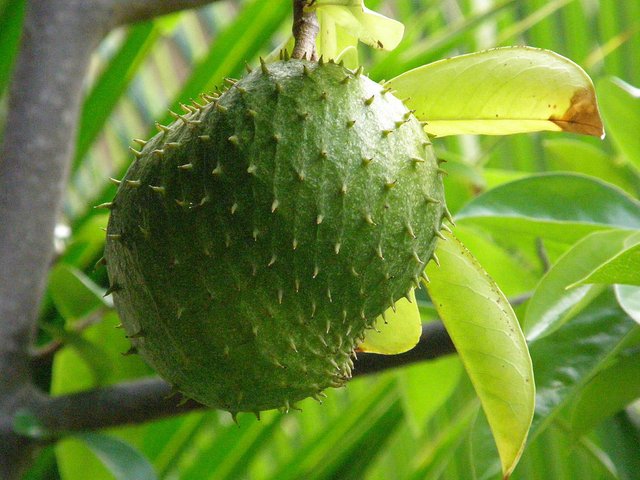
Image CC 2.0, Malcom Manners source Flickr
Guanabana, known as soursop or graviola, is a large fruit, weighing up to 3 kilograms, covered by a slightly thorny green peel that has a white pulp reminiscent of the flavor of yogurt.
It is the subject of scientific studies because it has always been used in traditional medicine in many countries for the treatment of various diseases but also for the potential capacity to stimulate the immune system, especially of its leaves.
The list could go on indefinitely, but I will finish by presenting you quickly some other weird fruit:
mamey zapote, with its soft orange pulp that tastes like flan;
tomate de palo (tamarillo), whose taste seems a mix between a tomato and a strawberry and grows on trees, as its Spanish name suggests;
noni, last by choice, because it is, in my opinion, not really edible: it releases a strong smell of bad cheese that discourages any use, but it seems to have exceptional healing properties...
Anyway you can try it, if you dare!
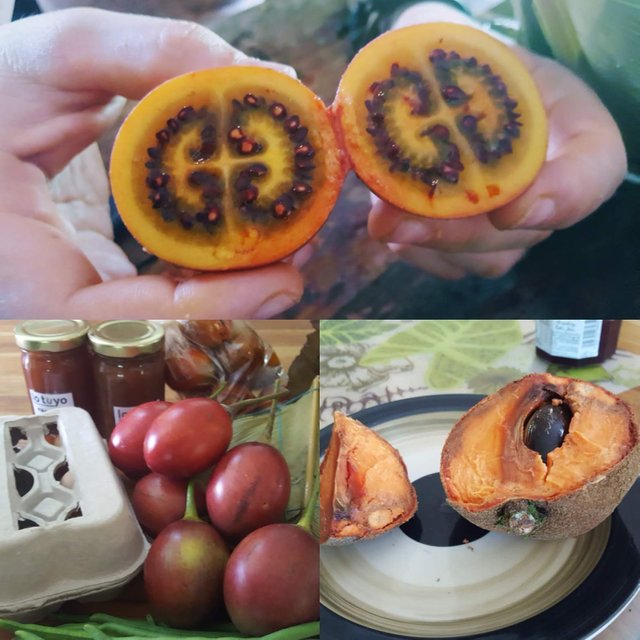
All images are mine except where specified
SOURCES
https://www.sciencedirect.com/topics/agricultural-and-biological-sciences/anacardium-occidentale
https://mundoentrenamiento.com/mangostan-el-fruto-de-la-salud/
https://www.sciencedirect.com/science/article/pii/S1878535216000058
ITALIANO
Eccoci dunque alla seconda parte del nostro viaggio alla scoperta della frutta tropicale, in particolare quella che si può trovare a Panama, in centro America. Nella prima parte abbiamo osservato da vicino quelli che sono i frutti esotici più conosciuti ed esportati nel mondo intero: oggi ne analizzeremo alcuni che difficilmente possiamo assaggiare al di fuori dei paesi ubicati nella fascia tropicale.
Una breve menzione va fatta però per due pilastri dell’economia alimentare locale e del commercio estero, sui cui non mi soffermerò poiché necessitano di un focus esclusivo: il caffè, di cui spesso ci si dimentica quando si parla di specie tropicali ed il cacao, considerato il cibo degli dei.
Il primo, di cui a Panama ne viene prodotta una qualità talmente eccelsa, da non venire impiegata dalle compagnie internazionali più celebri per ottenere le miscele economiche che tutti compriamo confezionate al supermercato, è un mondo complesso e pieno di sfumature tanto quanto quello del vino. Il secondo merita un capitolo a sé per scoprire il processo che lo trasforma in una delle delizie dolciarie mai inventate: il cioccolato! Mi auguro, in futuro, di poter scrivere di entrambi.
Marañón

Il frutto locale con cui abbiamo avuto una “stretta relazione” sin dal nostro arrivo è il marañón, che infatti ha dato il nome alla nostra guest house in quanto unica cosa presente sul terreno al momento dell’acquisto: non è altro che l’Anacardio della famiglia delle Anacardiaceae, di cui fanno parte anche mango e pistacchio, chiamata così perché questi frutti ricordano la forma di un cuore, cardium in latino.
Molti conoscono questa noce originaria del Brasile, ma quasi nessuno sa come si sviluppa. Cresce su un albero sempreverde di dimensioni ridotte e dal tronco sovente ricurvo che genera dei piccoli fiori rosa molto profumati: nasceranno solo uno o due frutti per ogni infiorescenza. Il primo germoglio che spunta è proprio la noce cuoriforme (anche se a me ricorda più un rene), ma successivamente inizia a svilupparsi un secondo corpo, lo pseudo frutto, detto maragnone o mela di cagiù: le sue dimensioni e le sue fattezze richiamano alla memoria la nostra pera, ma non la consistenza che risulta, al contrario, morbida. La buccia è gialla o rossa e si presenta molto liscia al tatto. Il maragnone è facilmente deperibile e, non avendo nemmeno un gran gusto, non viene commercializzato nemmeno a livello locale.

Si trovano alberi di anacardio in abbondanza lungo molte strade di campagna e la gente del posto, durante la stagione della raccolta che va da gennaio a marzo in genere, ne approfitta per raccogliere i frutti: le “mele” verranno usate in casa per qualche dolce tipico o succo, come la chicha de marañón (si spreme e si diluisce con acqua e zucchero per stemperare il forte gusto astringente) mentre le noci, saranno vendute crude o processate.
Per rendere gli anacardi commestibili serve appunto un laborioso processo, senza il quale il contatto della pelle con la parte interna del seme provocherebbe gravi ustioni: rompendo il guscio, infatti, fuoriesce un acido corrosivo altamente dannoso per i tessuti umani, che viene impiegato a livello industriale per produrre resine, vernici e impermeabilizzanti. La lunga lavorazione prevede, tra l’altro, la tostatura, simile a quella della nostra caldarrosta, l’essiccazione, la sgusciatura e un’ulteriore tostatura. Il risultato è uno snack molto sfizioso ricco di sostanze nutritive, sebbene ad alto tasso allergico.
Maracuyá

La maracuyá o frutto della passione, pur avendo un gusto delizioso e svariate proprietà nutrizionali, come tutti i prodotti vegetali del resto, non ha particolari note da prendere in considerazione se non la bellezza del suo fiore, la famosa passiflora, usata anche per preparare tisane rilassanti. La pianta è un rampicante dai grandi fiori che produce frutti ovali dal colore giallo o viola scuro generalmente aspri, eccetto nella versione silvestre che presenta bacche più piccole e più dolci.

By Germanchauta - Own work Source Wikicommos CC BY-SA 4.0
Mangostano

Image CC0 Source Pixabay
Il mangostano è un frutto originario del sud est asiatico che arrivò a Panama all'inizio del 1900 ed è caratterizzato da una buccia dura violacea che racchiude una polpa bianca succulenta. Per il suo sapore è considerato il re della frutta tropicale sebbene la sua distribuzione sia ridotta.
È finito al centro dell’attenzione all'inizio del nuovo millennio per le presunte proprietà antitumorali che lo hanno portato ad essere commercializzato sotto forma di succo in vari paesi del mondo. Successivamente la FDA negli USA ed altre istituzioni estere hanno sospeso la diffusione del frutto come prodotto medicinale. Da allora è stato reintrodotto in commercio ma come super food, per i suoi innegabili valori nutrizionali tra cui le vitamine B e C, l’acido folico e sali minerali vari.
Altri studi però, tra cui uno del 2009 pubblicato nel Journal of medicinal food riportano risultati per cui il mangostano aiuterebbe a stimolare il sistema immunologico ed avrebbe proprietà anti-infiammatorie e anti-ossidanti. Vale la pena assaggiarlo in ogni caso!
Pifá
_11.jpg)
Image of public domain Source Wikipedia
Il pifá, dal nome scientifico Bactris gasipaes, detiene probabilmente il primato in quanto a nomi con cui è conosciuto in spagnolo tra cui pipire e pixbae, ma sembra non averne nemmeno uno in italiano.
Appartiene alla famiglia delle Arecaceae, note volgarmente come palme: è infatti una palma alta fino a 20 metri con il tronco ricoperto da spine. Il pifà è una drupa di forma tonda non più grande di 6 cm di diametro, di colore variabile dal verde al rosso e di consistenza farinosa; viene consumato generalmente dopo bollitura in acqua salata e ha un sapore molto invitante simile alla patata, ma più gustoso.
I suoi valori nutrizionali lo rendono uno dei frutti tropicali più completi: possiede infatti fino al 4,8% di proteine di alta qualità oltre ad aminoacidi essenziali, grassi insaturi, Beta-Carotene, calcio e ferro.

Guanabana

Image CC 2.0, Malcom Manners source Flickr
La guanabana o graviola, è un frutto dalle dimensioni considerevoli, che può raggiungere i 3 chilogrammi, coperto da una buccia verde leggermente spinosa. La polpa bianca all'interno ricorda il sapore dello yogurt. Anch'essa è oggetto di studi scientifici poiché impiegata da sempre nella medicina tradizionale di molti paesi per il trattamento di svariate malattie, ma anche per la capacità di stimolare il sistema immunitario, specialmente grazie all'assunzione delle sostanze presenti nelle foglie di questo albero.
La lista potrebbe andare avanti all’infinito, ma concluderò presentandovi velocemente:
il mamey zapote, dalla polpa morbida arancione che sa di budino al creme caramel;
iltomate de palo (pomodoro da albero), il cui gusto sembra un incrocio tra un pomodoro ed una fragola e cresce sugli alberi,come suggerisce il suo nome;
infine il noni, ultimo per scelta, poiché non è, secondo me, realmente commestibile: sprigiona un forte odore di formaggio andato a male che ne scoraggia un qualsiasi uso, ma pare avere eccezionali proprietà curative...
A voi la facoltà di provarlo, se avete il coraggio!

Tutte le immagini del post sono mie, eccetto dove specificato diversamente
FONTI
This post was shared in the Curation Collective Discord community for curators, and upvoted and resteemed by the @c-squared community account after manual review.
This post has been voted on by the steemstem curation team and voting trail.
There is more to SteemSTEM than just writing posts, check here for some more tips on being a community member. You can also join our discord here to get to know the rest of the community!
Quanta buona frutta!!!!
Tra l'altro cercando informazioni è venuto fuori paw paw!
https://it.wikipedia.org/wiki/Asimina_triloba
Nooo non lo sapevo
😍ma che meraviglia il frutto della passione poi lo adoro!
Posted using Partiko Android
Buonissimo, però da solo è un po' acido, lo preferisco frullato insieme alla banana o alla papaya!
Certo che la natura nella tua zona ha davvero la massima espressione possibile e sviluppa tutta la sua grande fantasia.
Complimenti per questo valido e gradevole post
È vero, per alcuni versi è proprio il paradiso terrestre! Grazie @mad-runner
Posted using Partiko Android
Arriva il mio commento con vergognoso ritardo!!! scusami Erika!
Comunque vedo che la lista delle prelibatezze non era finita con la prima parte..in questa scelgo decisamente il frutto della passione sluuurrpppp
Male male...Non ti scuso :)
Grazie del commento e del voto!
Excellent post! These are some of my favorite fruits, the only one I haven't seen before is marañón! Thank you for sharing this with us on steem!
You're welcome! Thanks for your comment @ecoinstant
I didn't know how cashew nuts grow! Thank you for the information!
I didn't know how
Cashew nuts grow! Thank you for
The information!
- delishtreats
I'm a bot. I detect haiku.
You're welcome @delishtreats, thanks for you comment!
Posted using Partiko Android